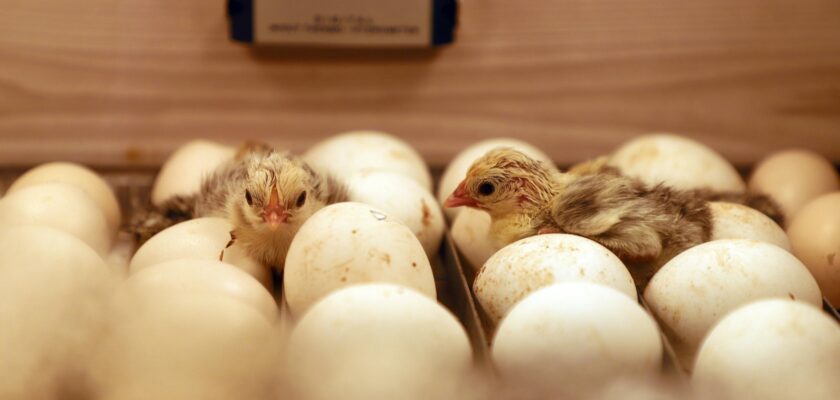Introduction to Chicken Egg Development
The stages of chicken egg development are a marvel of nature, taking place in just 21 days from fertilization to hatching. Whether you’re a backyard chicken keeper, a farmer, or simply curious about embryology, understanding this process reveals not only the complexity of life but also how to best support healthy chick development.
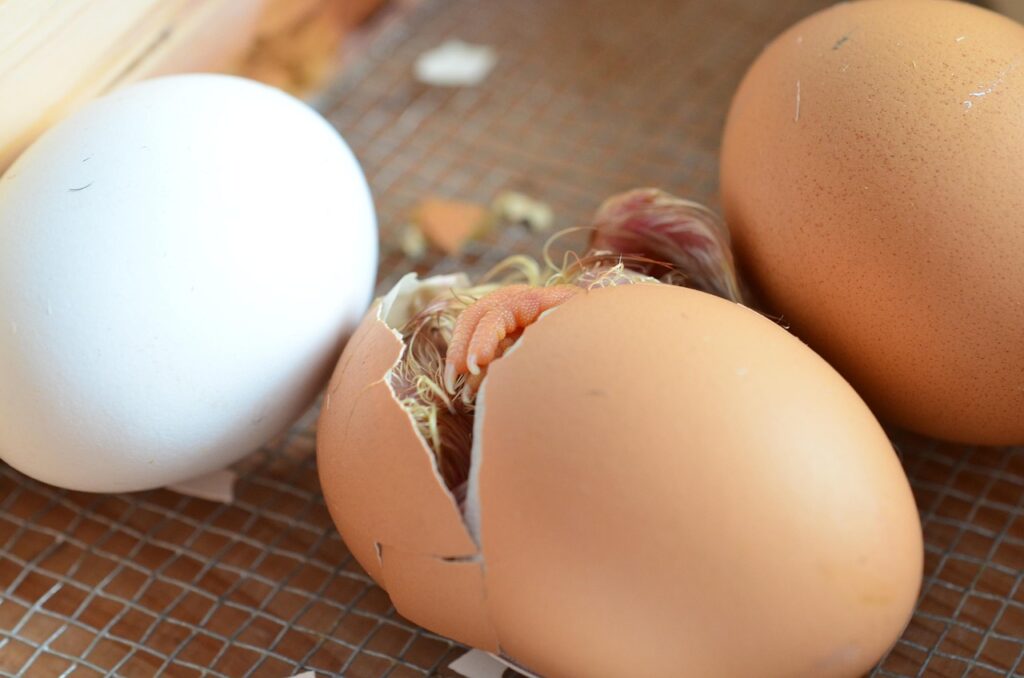
Image by congerdesign from Pixabay
Hatching Science: From Egg to Chick
The full process is tightly packed into three weeks. Let’s break down the development stages.
Day 1-3: Cell Division and Early Embryo
- After fertilization, cleavage begins—cells start dividing rapidly.
- By Day 3, the heart begins to beat.
- A visible network of blood vessels forms through the yolk.
Day 4-7: Organ Formation Begins
- The brain, eyes, beak, and limbs start developing.
- The embryo takes a C-shape.
- Feather germs and the backbone begin to appear.
Day 8-14: Rapid Growth and Movement
- Wings, legs, and beak become more defined.
- The chick starts moving inside the egg.
- Scales, claws, and eyelids form.
Day 15-21: Final Development and Positioning
- The chick turns to a hatching position—head under the right wing.
- Yolk sac draws into the body (final energy supply).
- Shell breaking begins with the egg tooth.
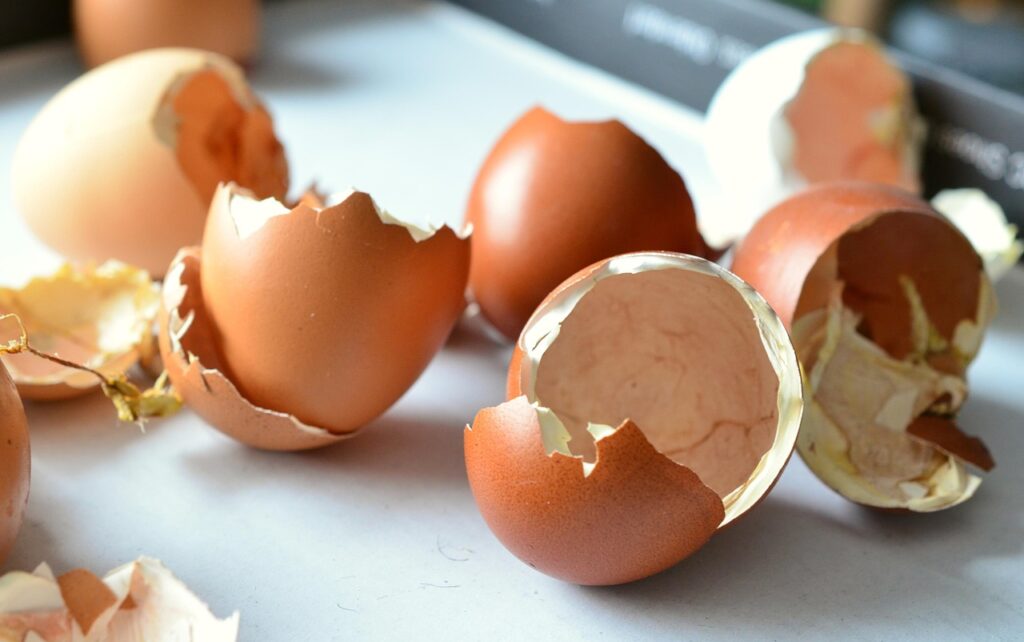
Image by congerdesign from Pixabay
Anatomy of a Chicken Egg
Shell and Shell Membrane
- Porous shell allows gas exchange.
- Shell membranes offer initial protection from bacteria.
Albumen (Egg White)
- Cushions the embryo.
- Supplies water and protein.
Yolk and Germinal Disc
- The yolk provides nutrition.
- The germinal disc is where fertilization and embryo growth begin.
Fertilization Process in Chickens
Fertilization occurs inside the hen before the shell is formed. A rooster’s sperm fertilizes the egg within 24 hours of mating. The egg then travels down the oviduct where layers of albumen, membranes, and shell are added before it’s laid.
Role of Incubation in Development
Natural Incubation by Hens
- Hens maintain a steady temperature of 99.5°F (37.5°C).
- They turn the eggs multiple times daily to prevent adhesion.
Artificial Incubation Techniques
- Modern incubators control temperature, humidity, and turning.
- Humidity around 50-55% during development and 65-70% during hatching is critical.
- Eggs must be turned at least 3 times a day until Day 18.
Factors That Affect Egg Development
- Temperature fluctuations can delay or harm embryo growth.
- Humidity levels influence shell strength and chick size.
- Egg turning prevents deformities and promotes even development.
- Hygiene prevents bacterial infections.
Common Issues in Egg Development
- Early death due to improper temperature.
- Malpositioning if eggs aren’t turned.
- Unfertilized eggs mistaken for viable ones.
- Shrink wrapping from low humidity during hatching.
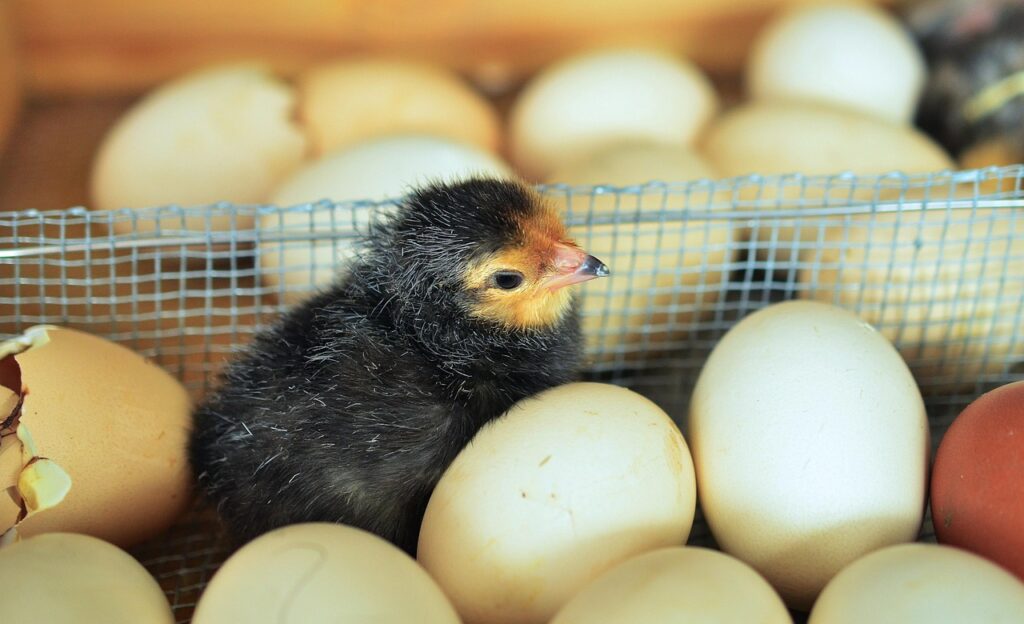
Image by congerdesign from Pixabay
Nutritional Needs for Breeding Hens
A hen’s diet affects the quality of her eggs:
- Calcium for strong shells.
- Protein for healthy embryo growth.
- Vitamins A, D, E, and B-complex for overall reproductive health.
- Always use layer feed with 16-18% protein for optimum results.
Benefits of Understanding Egg Development
- Helps maximize hatch rates in poultry farming.
- Aids in early identification of developmental issues.
- Supports better breeding practices.
- Increases appreciation of natural life cycles.
FAQs About Chicken Egg Development
How long does it take for a chick to hatch?
It takes 21 days under optimal incubation conditions.
What temperature should I maintain in an incubator?
99.5°F (37.5°C) with slight variation allowed.
How do I know if an egg is fertilized?
Use candling on Day 7 to see blood vessels or movement.
Can store-bought eggs hatch?
No, store-bought eggs are not fertilized.
Why do some chicks not survive?
Causes include improper incubation, genetics, and infections.
When should I stop turning the eggs?
Stop turning at Day 18 to let chicks position for hatching.
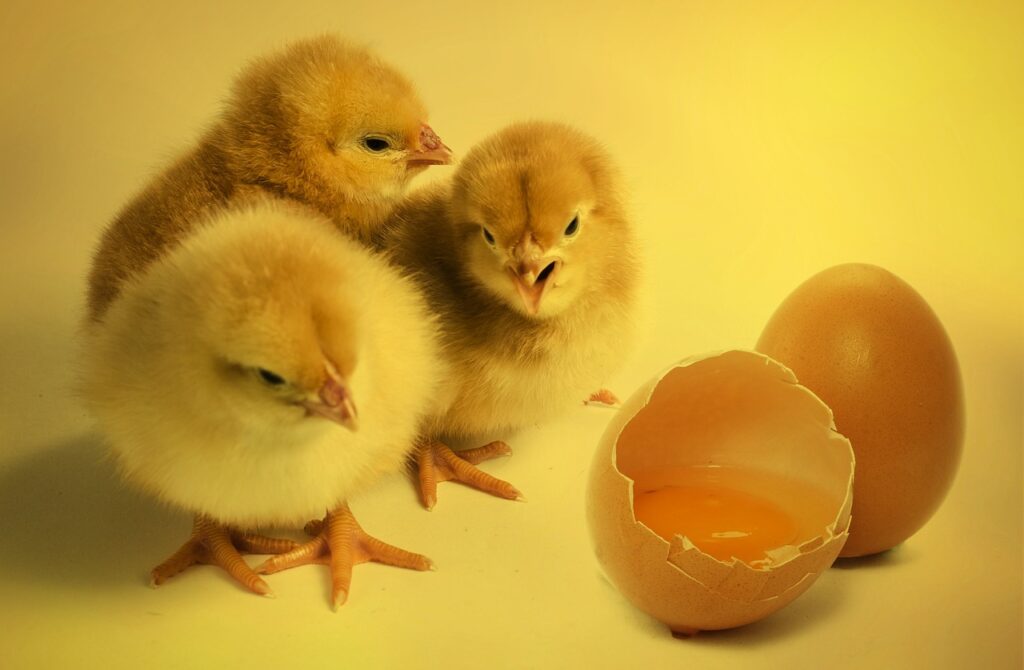
Conclusion: The Miracle Within the Shell
The development of a chicken egg is a perfect biological timeline showcasing growth, adaptation, and life itself. With proper care and understanding, you can support healthy hatching and witness nature’s wonder firsthand.
